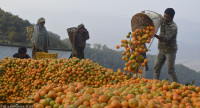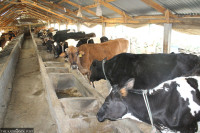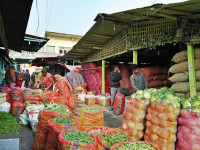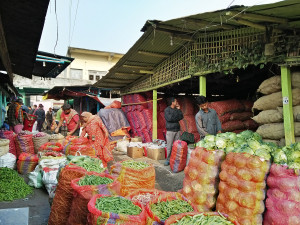Money
Banana production drops due to plant disease
Banana growers who have been earning a good income after going into commercial farming are worried after their crops were attacked by a disease that has led to reduced output.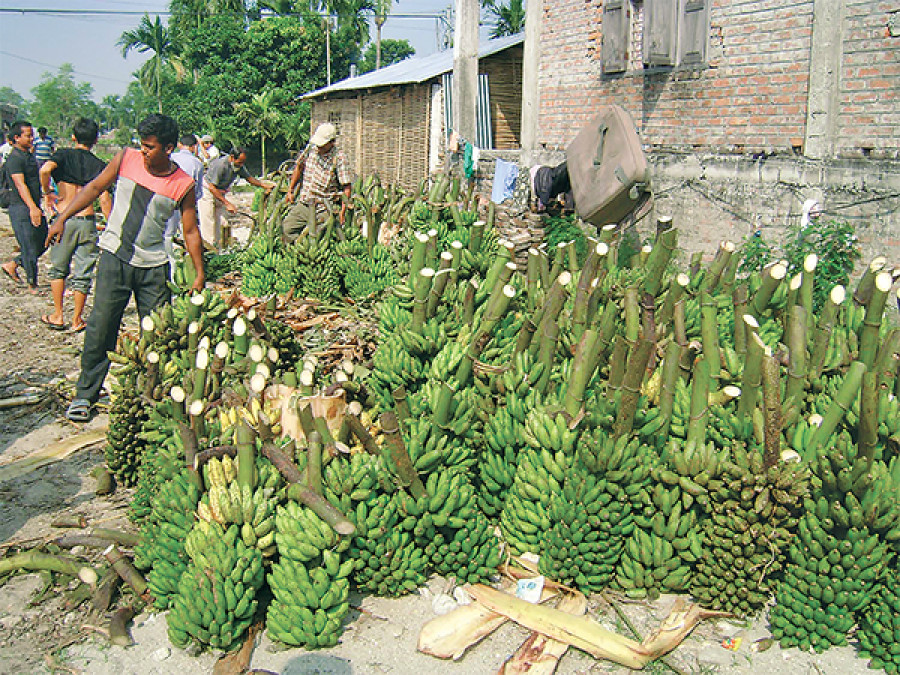
Parbat Portel, Bed Raj Paudel & Binod Bhandari
According to the farmers, the plants have been turning pale, the stems are infested with pests and the roots have rotted. Although they have been using chemicals to prevent the disease from spreading, they have had no effect. Agricultural experts are reported to have urged the farmers to sow new plants.
The plant disease has caused concern as commercial banana farming has helped to improved the living conditions of the people in the region. A large number of farmers here had switched to banana farming and left their traditional crops due to the large income it offered.
According to them, a bigha of land yields a banana harvest worth Rs 300,000 after deducting production costs while the same piece of land produces rice worth a mere Rs 20,000. Farmers said that they could increase their earnings three-fold by growing bananas compared to the income they made from paddy plantation.
Farmers in recent days have been complaining that production has gone down due to the disease spreading among the banana plants. “The production has been badly hit by the disease,” said Sujaya Gautam from Dangihat, Morang.
Banana farming started in Dangihat four decades ago. Over the period, more than 500 farmers here have taken up banana production on plots ranging in area from 10 katthas to 10 bighas. Gautam said banana cultivation had dropped to 10 bighas of land from more than 200 bighas earlier.
Around 1,500-1,600 banana saplings can be planted on a bigha of land. The fruit can be harvested in 14 months, up to which time the production cost can amount up to Rs 200,000. As per the farmers, an average of Rs 480,000 can be earned from selling bananas produced on a bigha of land.
Gautam said the Kathmandu valley was the main market for the local products. “Due to the disease, there could be a shortage of Malvog bananas, a premium type of banana,” he said.
Meanwhile, Ramesh Dhimal, another farmer from Dangihat, said that banana farmers had become disenchanted with the fruit even though they were earning a lot earlier. “I am also planning to abandon banana farming as it has become difficult for me to break even,” he said.
Dangihat, Bayarban, Bahuni and Mrigauliya are some of the places in Morang district that are well known for banana production. As per the District Agriculture Development Office (DADO), a total of 2,000 hectares of land in these areas have been used for banana cultivation.
DADO Chief Kashi Chaudhary said last year’s production was recorded at 26,600 tonnes. “It seems to have fallen sharply this year,” he added. Chaudhary said the old plants along with improper use of chemicals had given rise to the present situation.
“The situation will not improve until new plants are sown,” he said. Morang is famed for the Malvog bananas grown here. Chaudhary said they were planning to distribute Jhapali Malvog, a hybrid banana plant, to the farmers. “Besides distributing the saplings, we will train them on the proper use of the pesticides.”
The local bananas are shipped to the Kathmandu valley while Indian products are widely sold in the local market. According to the Customs Office, bananas worth Rs 1.2 million were imported through Jogbani Customs last year. The statistics show that bananas worth Rs 500,000 have been imported over the last six months.
Meanwhile, farmers from Haripur-5, Sunsari complained that their banana fields were being destroyed by wild elephants who attack their farms almost every night.
A local farmer Surendra Sahu said that they had installed electric fences around their fields to keep the wild elephants away. “However, if an elephant is electrocuted, we have to face legal hassles,” he said.
Low supplies of fertilisers and chemicals, lack of insurance and unavailability of technical experts are the other problems that farmers suffer from, they said.




 16.12°C Kathmandu
16.12°C Kathmandu



